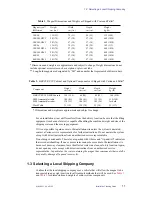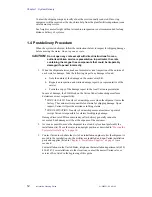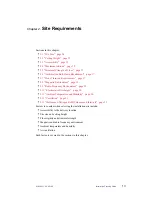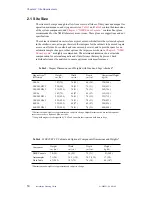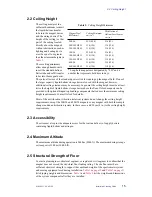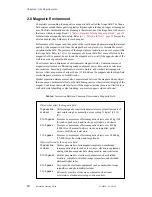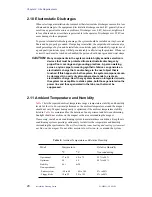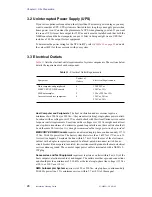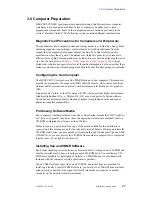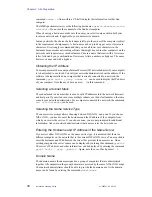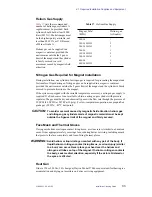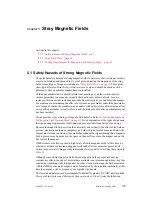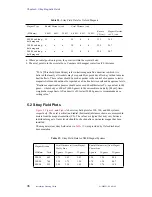
3.4 Compressed Air Supply
01-999021-00 A0100
Installation Planning Guide
25
3.4 Compressed Air Supply
The house air supply must provide air that is clean, dry, and free of contaminants, with a
dew point of –40
°
C (–40
°
F) minimum. It must also be capable of delivering the air
pressures (in kilopascals or pounds-per-square-inch-gauge) and flow rates (in liters-per-
minute or standard cubic-feet-per-hour) after filtering, as listed in
.
The typical flow rates, listed in
measured with the source pressure set to 30
psig, spin rate set to 20 rps, bearing air set to minimum value for proper sample spinning,
and probe body cooling air set to 5 LPM (10.6 SCFH).
Install a gate valve on the permanent outlet of the house compressed air supply line. The
valve should be rated at a minimum of 860 kPa (125 psi or 9 kg/cm
2
). If house pressure is
greater than this level, the valve must be rated at a level higher than the house pressure.
Attach to the gate valve a 1/2-inch high-pressure pipe terminating with a 1/2-inch male
NPT fitting. Provide a long enough length of the high-pressure pipe from the gate valve so
that the NPT fitting is located within 4.5 m (15 ft) of the proposed magnet site. A primary
air regulator capable of
±
2 psi is also required upstream from the gate valve. The
installation engineer will connect the NPT fitting to a Varian-supplied filter assembly and
air hose to the magnet. The filter assembly includes a 0 to 400 kPa (0 to 100 psi) pressure
gauge, a reduction valve, a standard 20-micron air filter, and a coalescing oil filter (99.9
percent oil removal efficiency). The maximum input to the reducer is 100 psi (690 kPa, 7
kg/cm
2
).
In areas where humidity is high or where moisture in the air supply is a problem, a prefilter
with an automatic drain can help prevent overload of the filter. In extreme cases, an air dryer
assembly is necessary. These units must be provided by the customer. The source should
include a reservoir and be capable of delivering the air pressures (in kilopascals or pounds-
per-square-inch-gauge) and flow rates (in liters-per-minute or standard cubic-feet-per-hour)
after filtering as given in
If a portable compressor is used as the air supply, the unit should have a holding tank
capacity of 80 gallons (303 liters) to avoid the compressor cycling off and on. In moist
environments, an air dryer is also usually necessary, as well as an automatic drain on the
holding tank. Systems with TMC antivibration legs require 80 psi.
Table 12. Compressed Air Supply Source
MERCURY-VX Configuration
Source Pressure
(Minimum)
Flow Rate
(Typical)
200-, 300-, or 400-MHz, without options:
Normal operation
240 kPa (35 psig)
20 LPM (42 SCFH)
During sample eject
240 kPa (35 psig)
50 LPM (106 SCFH)
200-, 300-, or 400-MHz, with VT accessory (set 20
°
C to 100
°
C):
Normal operation
240 kPa (35 psig)
30 LPM (64 SCFH)
During sample eject
240 kPa (35 psig)
60 LPM (128 SCFH)
TMC antivibration legs
80 psi
—

